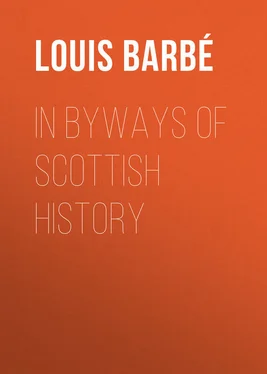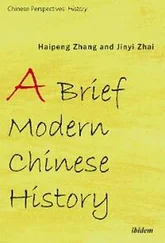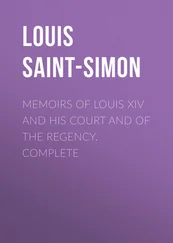Louis Barbé - In Byways of Scottish History
Здесь есть возможность читать онлайн «Louis Barbé - In Byways of Scottish History» — ознакомительный отрывок электронной книги совершенно бесплатно, а после прочтения отрывка купить полную версию. В некоторых случаях можно слушать аудио, скачать через торрент в формате fb2 и присутствует краткое содержание. Жанр: foreign_antique, foreign_prose, на английском языке. Описание произведения, (предисловие) а так же отзывы посетителей доступны на портале библиотеки ЛибКат.
- Название:In Byways of Scottish History
- Автор:
- Жанр:
- Год:неизвестен
- ISBN:нет данных
- Рейтинг книги:4 / 5. Голосов: 1
-
Избранное:Добавить в избранное
- Отзывы:
-
Ваша оценка:
- 80
- 1
- 2
- 3
- 4
- 5
In Byways of Scottish History: краткое содержание, описание и аннотация
Предлагаем к чтению аннотацию, описание, краткое содержание или предисловие (зависит от того, что написал сам автор книги «In Byways of Scottish History»). Если вы не нашли необходимую информацию о книге — напишите в комментариях, мы постараемся отыскать её.
In Byways of Scottish History — читать онлайн ознакомительный отрывок
Ниже представлен текст книги, разбитый по страницам. Система сохранения места последней прочитанной страницы, позволяет с удобством читать онлайн бесплатно книгу «In Byways of Scottish History», без необходимости каждый раз заново искать на чём Вы остановились. Поставьте закладку, и сможете в любой момент перейти на страницу, на которой закончили чтение.
Интервал:
Закладка:
A few days after the marriage, on the 9th of March, a grant from the Queen to Mary Livingston and John Sempill passed the great seal. In this official document she styles the bride "her familiar servatrice", and the bridegroom "her daily and familiar serviter, during all the youthheid and minority of the said serviters". In recognition of their services both to herself and the Queen Regent, she infeofs them in her town and lands of Auchtermuchty, part of her royal demesne in Fifeshire, the lands and lordships of Stewarton in Ayr, and the isle of Little Cumbrae in the Firth of Clyde.
After her marriage "Madamoiselle de Semple" was appointed lady of the bedchamber, an office for which she received £200 a year. Her husband also seems to have retained some office which required his personal attendance on the Queen, for we know that both husband and wife were in waiting at Holyrood on the memorable evening of David Rizzio's murder. The shock which this tragic event produced on Mary was very great, and filled her with the darkest forebodings. She more than once expressed her fear that she would not survive her approaching confinement. About the end of May or the beginning of June, shortly before the solemn ceremony of "taking her chamber", she caused an inventory of her personal effects to be drawn up by Mary Livingston and Margaret Carwod, the bedchamber woman in charge of her cabinet, and with her own hand wrote, on the margin opposite to each of the several articles, the name of the person for whom it was intended, in the event of her death and of that of her infant. Mary Livingston's name appears by the side of the following objects in the original document, which was discovered among some unassorted law papers in the Register House, in August, 1854: —
Quatre vingtz deux esguillettes xliiij petittes de mesme facon esmaillez de blancq.
Une brodure du toure contenante xxv pieces esmaille de blanc et noir facon de godrons.
Vne brodeure doreillette de pareille facon contenante xxvij pieces esmaillees de blanc et noir.
Vne cottouere de semblable facon contenante lx pieces de pareille facon esmaillee de blanc et noir.
Vng carcan esmaille de blanc et noir contenant dixsept pieces et a chacune piece y a vng petit pandant.
Vne chesne a saindre de semblable facon contenante liiij pieces esmaillees de blanc et noir et vng vaze au bout.
Vne corde de coural contenante lxiij pieces faictes en vaze.
Vne aultre corde de coural contenante treize grosses pieces aussy en vaze.
Vne aultre corde de coural contenante xxxviij pieches plus petittes aussy en vaze.
Vng reste de patenostres ou il a neuf meures de perles et des grains dargent entredeux.
Vne saincture et cottouere de perles garnie bleu et grains noir faict a roisteau.
Item: haill acoustrement of gold of couter carcan and chesne of 66 pyecis.
Only on one occasion after this do we find mention of Mary Livingston in connection with her royal mistress. It is on the day following the Queen's surrender at Carberry, when she was brought back a prisoner to Edinburgh. The scene is described by Du Croc, the French Ambassador. "On the evening of the next day," he writes in the official report forwarded to his court, "at eight o'clock, the Queen was brought back to the castle of Holyrood, escorted by three hundred arquebusiers, the Earl of Morton on the one side, and the Earl of Athole on the other; she was on foot, though two hacks were led in front of her; she was accompanied at the time by Mademoiselle de Sempel and Seton, with others of her chamber, and was dressed in a night-gown of various colours." 90
After the Queen's removal from Edinburgh the Sempills also left it to reside sometimes at Beltreis, and sometimes at Auchtermuchty, but chiefly in Paisley, where they built a house which was still to be seen but a few years ago, near what is now the Cross. Their retirement from the capital did not, however, secure for them the quietness which they expected to enjoy. They had stood too high in favour with the captive Queen to be overlooked by her enemies. The Regent Lennox, remembering that Mary Livingston had been entrusted with the care of the royal jewels and wardrobe, accused her of having some of the Queen's effects in her possession. Notwithstanding her denial, her husband was arrested and cast into prison, and she herself brought before the Lords of the Privy Council. Their cross-questioning and brow-beating failed to elicit any information from her, and it was only when Lennox threatened to "put her to the horn", and to inflict the torture of the "boot" on her husband, that she confessed to the possession of "three lang-tailit gowns garnished with fur of martrix and fur of sables". She protested, however, that, as was indeed highly probable, these had been given to her, and were but cast-off garments, of little value or use to anyone. In spite of this, she was not allowed to depart until she had given surety "that she would compear in the council-chamber on the morrow and surrender the gear".
Lennox's death, which occurred shortly after this, did not put an end to the persecution to which the Sempills were subjected. Morton was as little friendly to them as his predecessor had been. He soon gave proof of this by calling upon John Sempill to leave his family and to proceed to England, as one of the hostages demanded as security for the return of the army and implements of war, sent, under Sir William Drury, to lay siege to Edinburgh Castle.
On his return home, Sempill found new and worse troubles awaiting him. It happened that of the lands conferred upon Mary Livingston on her marriage some portion lay near one of Morton's estates. Not only had the Queen's gift been made by a special grant under the Great and Privy Seals, but the charter of infeofment had also been ratified by a further Act of Parliament in 1567, when it was found that the proposal to annul the forfeiture of George Earl of Huntly would affect it. It seemed difficult, therefore, to find even a legal flaw that would avail to deprive the Sempills of their lands and afford the Regent an opportunity of appropriating them to himself. He was probably too powerful, however, to care greatly for the justice of his plea. He brought the matter before the Court of Session, urging that the gift made by the Queen to Mary Livingston and her husband was null and void, on the ground that it was illegal to alienate the lands of the Crown. It was in vain that Sempill brought forward the deed of gift under the Great and Privy Seals, the judges would not allow his plea. Thereupon Sempill burst into a violent passion, declaring that if he lost his suit, it would cost him his life as well. Whiteford of Milntoune, a near relative of Sempill's, who was with him at the time, likewise allowed his temper to get the better of his discretion, and exclaimed "that Nero was but a dwarf compared to Morton". This remark, all the more stinging that it was looked upon as a sneer at the Regent's low stature, was never forgiven. Not long after the conclusion of the lawsuit, both Sempill and Whiteford were thrown into prison on a charge "of having conspired against the Regent's life, and of having laid in wait by the Kirk, within the Kirkland of Paisley, to have shot him, in the month of January, 1575, at the instigation of the Lords Claud and John Hamilton". After having been detained in prison till 1577, John Sempill was brought up for trial on this capital charge. His alleged crime being of such a nature that it was probably found impossible to prove it by the testimony of witnesses, he was put to the torture of the boot, with which he had been threatened on a former occasion. By this means sufficient was extorted from him to give at least a semblance of justice to the sentence of death which was passed on him. In consideration of this confession, however, the sentence was not carried out. Ultimately he was set at liberty and restored to his family. His health had completely broken down under the terrible ordeal through which he had gone, and he only lingered on till the 25th of April, 1579.
Читать дальшеИнтервал:
Закладка:
Похожие книги на «In Byways of Scottish History»
Представляем Вашему вниманию похожие книги на «In Byways of Scottish History» списком для выбора. Мы отобрали схожую по названию и смыслу литературу в надежде предоставить читателям больше вариантов отыскать новые, интересные, ещё непрочитанные произведения.
Обсуждение, отзывы о книге «In Byways of Scottish History» и просто собственные мнения читателей. Оставьте ваши комментарии, напишите, что Вы думаете о произведении, его смысле или главных героях. Укажите что конкретно понравилось, а что нет, и почему Вы так считаете.












